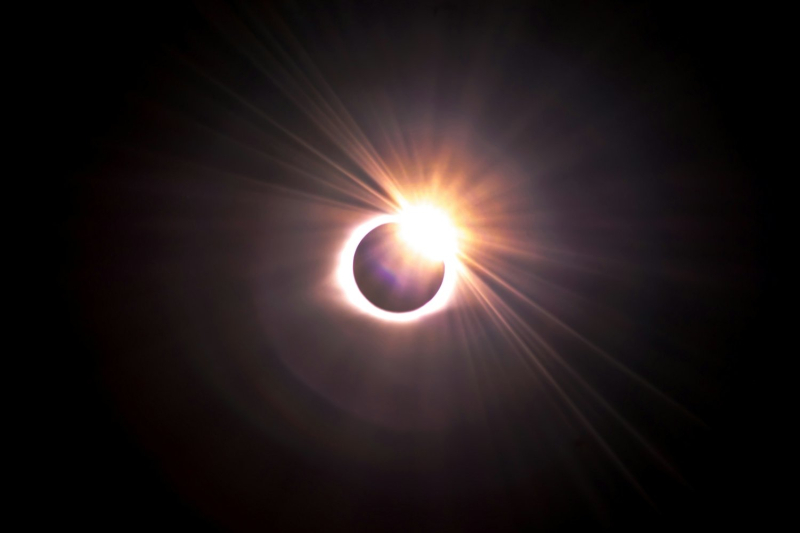
© Justin Dickey/Unsplash
It's certainly no secret to you, a solar eclipse is a natural phenomenon that occurs when the Moon comes in front of the Sun. The latter then totally or partially obscures the image of the Sun from the Earth. Total solar eclipses at a given location on Earth are as rare as they are short-lived, and the totality of an eclipse is observed only over a very narrow band. After the 2017 eclipse, in less than a month, fans will be able to enjoy a new solar eclipse.
A new eclipse with a strong North American trend
On April 8, millions of people will be able to observe a new solar eclipse. For this 15th total eclipse of the 21st century, totality will be visible in a narrow band located in North America, first crossing Mexico, the United States, then Canada. It is also the only total eclipse of this century that will be visible from the three countries.
The solar eclipse of August 2017 (made famous by US President Donald Trump viewing it without glasses), was the first total solar eclipse to pass in the United States during the 21st century (the previous one dates back to 1918). It was also nicknamed the “Great American Eclipse”, even though it was also visible in the evening, in certain European countries.
A major natural event to say the least, with for some a unique chance to experience a solar eclipse. For example, in Canada, near Quebec, the next solar eclipse is planned… for 2106. Suffice to say that for many enthusiasts, it is the chance of a lifetime (to observe a solar eclipse) which is looming on April 8.
As for Europe, the solar eclipse of April 8 will be partially seen in Norway, Iceland, Ireland, and in the southwest of Great Britain. Brittany, in the northwest of Spain and Portugal, but also in the Azores and the Canary Islands.
For the record, the entirety of this new solar eclipse will also pass through the town of Wapakoneta, in Ohio, the home of a certain Neil Armstrong, the first human being to set foot on the moon. In the United States, more than 31 million Americans will be able to enjoy the event from their place of residence.
Let us recall in passing that watching a solar eclipse without suitable glasses can cause burns to the cornea and retina, the fault of ultraviolet (UV) and infrared rays, then invisible, but despite everything extremely very harmful to the eyes.
📍 To not miss any news from Presse-citron, follow us on Google News and WhatsApp.
[ ]

